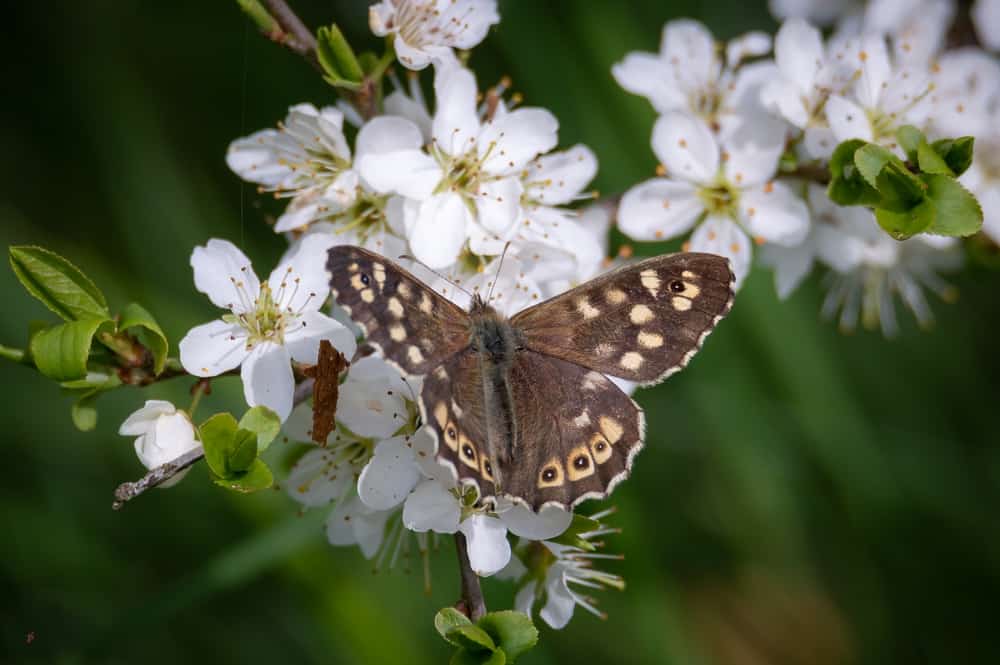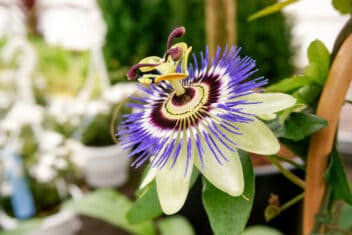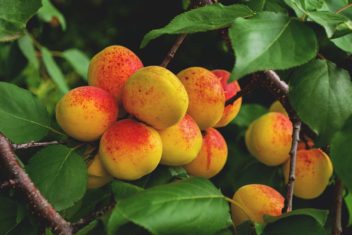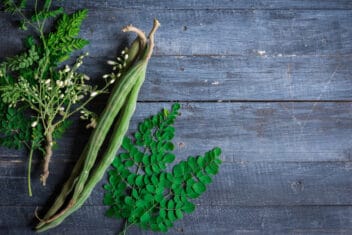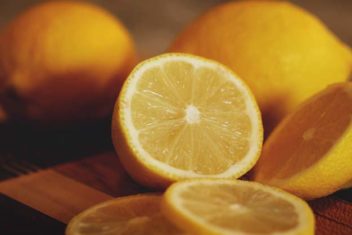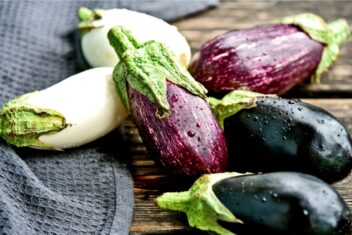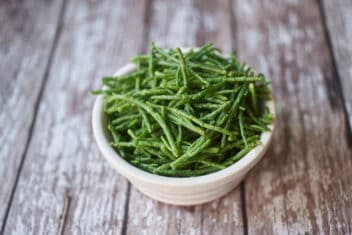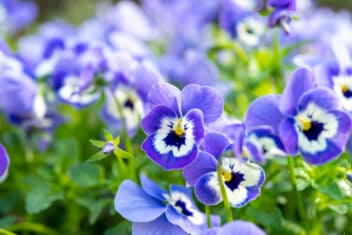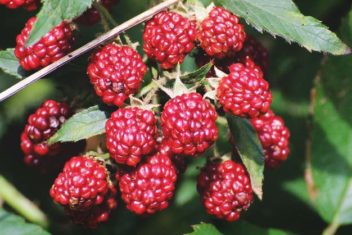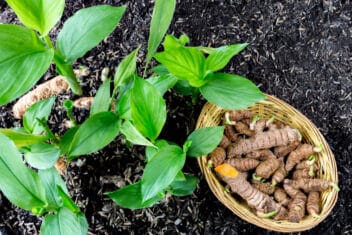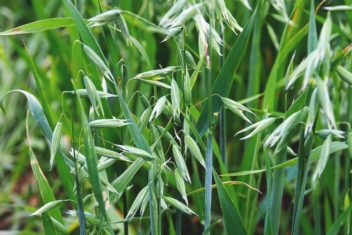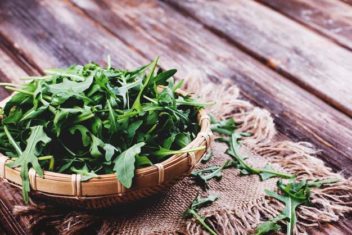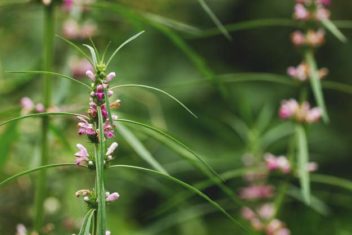I love growing hawthorns. Soft and pillowy white with blossoms in the spring, cheerful with berries in the fall, and gracefully curved all year long, hawthorns are a focal point in the yard or garden.
But hawthorns are more than just a pretty face. They’re rich in folklore and incredibly beneficial as medicinal and edible plants, as well.
If you’re looking for a tree that offers year-round interest, food, flowers, and protection, the hawthorn is it. Let’s learn more:
All About Hawthorns
I rarely bring new trees into my woodland homestead, but I couldn’t resist clearing out a few pines and replacing them with cheerfully gnarled hawthorns a few years ago. They look perfect among the birches and pines, and I can harvest flowers, leaves, berries, and thorns for herbal home remedies throughout the year.
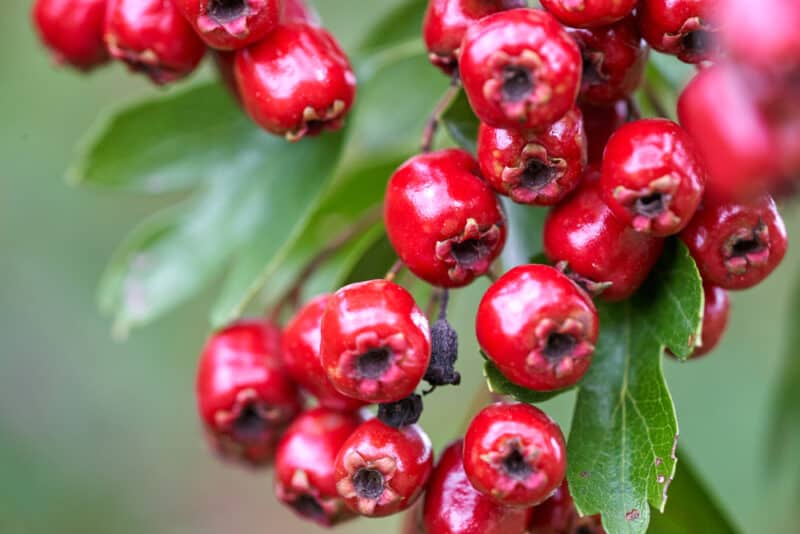
Thornless hawthorns are perfect trees for areas where they will be climbed on or played around by small children, since the thorns on other species can be gnarly and painful if you encounter them. In fact, these trees make effective natural fences.
All of the Crateagus species are medicinally effective, and all are an attractive addition to the garden. Choose one that fits your needs and your homestead. Most varieties of hawthorn are hardy down to USDA Growing Zone 3 and up to Zone 9, but check the specific information for each species before choosing one.
Hawthorns are considered small trees, growing anywhere from 15-50 feet tall. Some species are closer to a large shrub than a tree. These smaller varieties can grow close together to form lovely, tall hedges. Because they’re small-sized trees, hawthorns grow well in urban areas.
Best Hawthorn Cultivars and Species
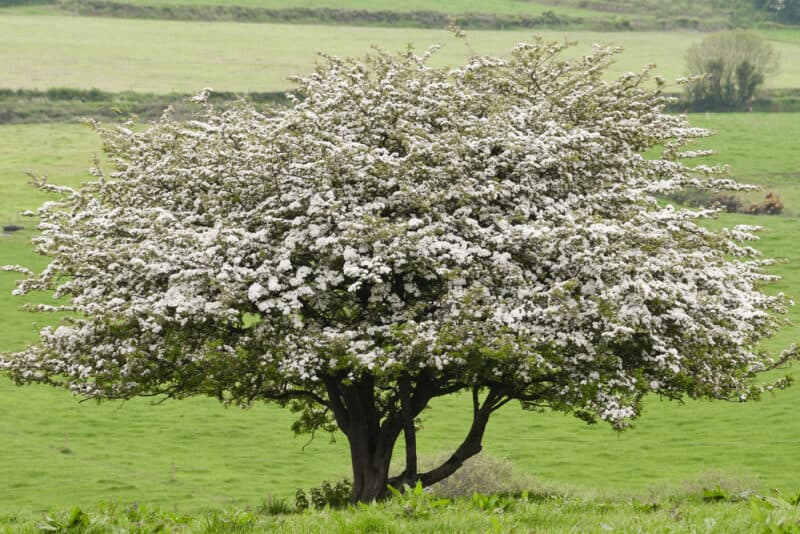
There are an incredible variety of hawthorns to choose from, with hundreds of species and cultivars. All hawthorns are part of the genus Crateagus, but each species will differ slightly.
I prefer traditional English hawthorns (C. laevigata) because I’m most comfortable working with them medicinally. But each hawthorn species has something to offer. If you prefer natives, stick to one of the many, many native species.
There are even lovely, scarlet-flowered cultivars within the C. laevigata species, which look fantastic interspersed with apple trees. ‘Paul’s Scarlet’ has double, rose-red blossoms. The flowers on ‘Crimson Cloud’ are red with a white center.
Some North American native species, like Washington hawthorns (C. phaenopyrum), are extremely disease-resistant.
Other species, like thornless cockspur (C. crus-galli var. inermis) are thornless. Downy hawthorns (D. mollis) have fewer and shorter thorns than many other species.
Fireberry (C. chrysocarpa) stays under 18 feet tall, with bright red berries in the fall.
Excited to start growing hawthorns? Talk to your local nursery to see which species grow natively in your area and if they’ll suit your needs.
Propagation
Hawthorns produce abundant berries, and you can start them from seed. But, it can take a hawthorn tree up to five years to start from seed, so it’s not really the most practical way to get going.
Fortunately, many varieties of young hawthorns are commonly sold as bare-root starts or young trees. These young trees grow rapidly and adapt quickly to a variety of soils.
Hawthorns can also be propagated via suckers, cuttings, and grafting. Try one of these methods if you want to start growing hawthorns by the dozen.
They’re often used as rootstock for fruit trees, such as apples, because they’re so adaptable to a wide range of soil conditions.
Planting Young Trees
Choose a spot and prepare the soil before planting. If you’ve ordered bare-root hawthorn trees, prepare the ground before they arrive so you can plant them immediately.
To prepare the soil, dig a hole twice as wide and twice as deep as the root ball. Add mulch and compost to the hole. Add enough compost and mulch to ensure the top of the root ball is above the soil line. Then, water the hole right before planting.
When everything is set, place the root ball in the center of the hole and start filling in around it with soil. Water and mulch the top of the earth. A thick layer of mulch will help your young trees retain moisture and reduce weed growth.
Ensure your growing hawthorns are set straight – not slumping in the soil. It’s easier to move a tree right after planting than to move a tree two years after planting.
Tips for Growing Hawthorns
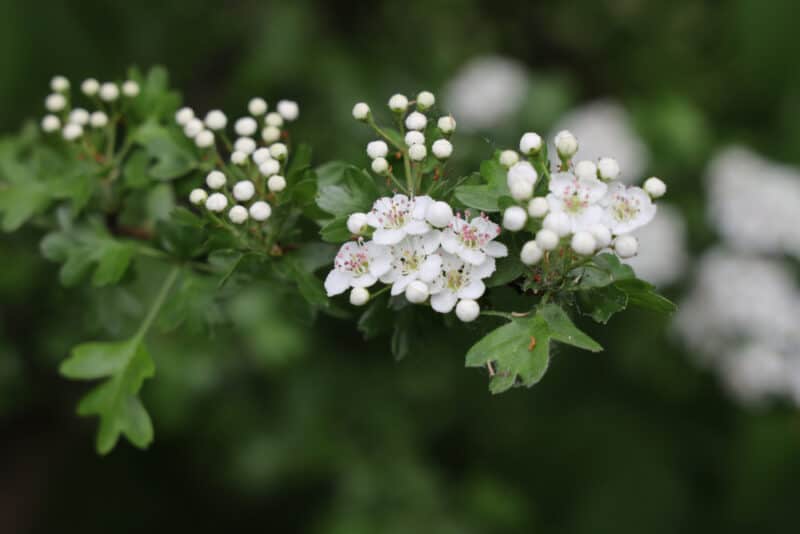
Hawthorns prefer full sun. They can thrive in partial sun, but the more light you offer your tree, the better it will grow.
In full sun, happily growing hawthorns produce plenty of healthy, leafy branches and showy blossoms. In partial shade, your trees will branch out less and have fewer flowers.
Soil
Hawthorns love moist, well-drained soil with a slightly acidic pH. Unless your soil is incredibly compacted or stagnant, your hawthorn will love it. Hawthorns are not fussy about soil, and soil conditions are rarely the primary cause of hawthorn health problems.
Water
When you’re hawthorn trees are young and recently planted, water them regularly. Make sure the soil stays slightly moist, especially during dry spells.
Don’t overwater, though. The soil shouldn’t be soggy, and the top inch or two should dry out between watering for young growing hawthorns.
Watering once a week in dry seasons may be fine, depending on where you live. Stay attentive enough to keep the soil from drying out. After a year or so, when the plants fully acclimate to their new home, your hawthorn trees will be impressively drought resistant.
Fertilizer
Give your hawthorns an application of tree-specific organic fertilizer every year in the spring. Slow-release tree fertilizers are ideal for hawthorns and help the tree produce those showy blooms and berries yearly.
Remember that if you use this tree medicinally, you should choose an organic fertilizer to support your hawthorn without chemicals.
Pests and Diseases
Though hawthorns are hardy and adaptable, they’re not invincible. Hawthorns are susceptible to a few different diseases, particularly if your growing hawthorns are in shady or wet conditions.
Trees in challenging environments, lacking proper nutrients, are more likely to succumb to diseases. Try to give your new tree the best chance at success by picking a location and amending the soil to give your trees a good chance at success.
Hawthorns often struggle with fungal diseases and occasional, but persistent pests. Hawthorn rust (similar to cedar-apple rust), apple scab, and powdery mildew are all common fungal afflictions for your hawthorn.
Some hawthorn growers will preventatively spray their trees with a tree-safe, anti-fungal spray each year, such a copper fungicide. Other people plant resistant species and cultivars such Washington, azarole (C. azarolus), and ‘Winter King Southern’ (C. viridis).
Hawthorn trees can also fall prey to fire blight. This bacterial infection kills flowers, blights leaves, and eventually causes whole branches to wither and die back.
If you see signs of fire blight on your hawthorns, carefully prune away the afflicted branches, disinfecting your shears between cuts. Then, remove the branches and burn them.
Pruning
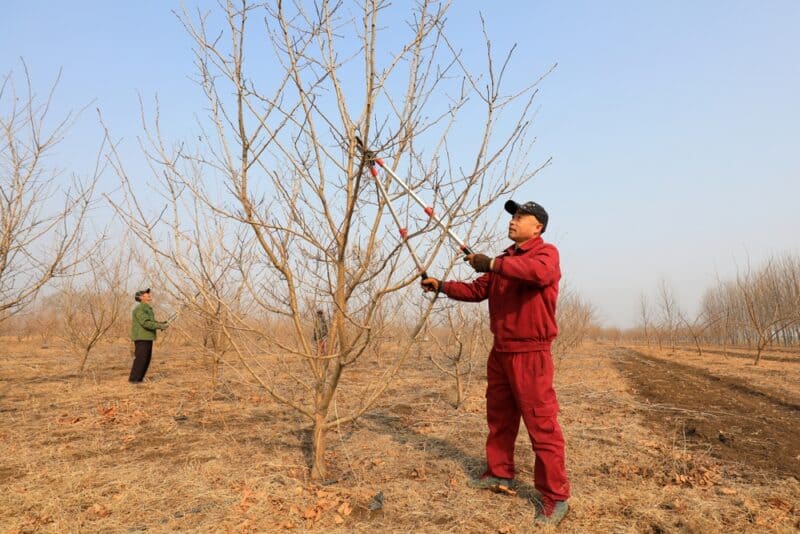
Some people say that hawthorn trees never need to be pruned. But, like any other tree, you must occasionally prune if you don’t want your hawthorn to grow wild.
When hawthorns run wild, they can turn into thorny thickets. Since hawthorn thorns can grow over three inches long, unrestrained hawthorn thickets can be dangerous places. That’s why some people use them as natural livestock fences.
When pruning your hawthorn, maintain a single leader branch with outward branches growing from the leader. Prune away branches that hang too low to the ground or crisscross with other strong branches.
Make pruning a part of your autumn yard work for the first five or six years of your hawthorn’s life. Prune after the leaves have fallen, but before the deep cold of winter.
If you faithfully prune your young hawthorn each year, when the tree is older, you reduce your pruning to an occasional tidying up instead of a yearly ritual.
If you’re pruning an older, larger hawthorn – start with the branches you can reach from the ground. Remember to be careful and only prune the branches you can reach safely. Don’t risk falling on a sturdy, three-inch thorn and impaling your hand.
If you want to have a thick fence to protect your livestock, plant the trees 10 feet apart, and don’t prune them. Just let the whole thing go nuts.
Also, remember that when growing hawthorns, they will send up suckers. Cut these down if you don’t want new trees forming.
Harvesting Flowers, Leaves, and Berries
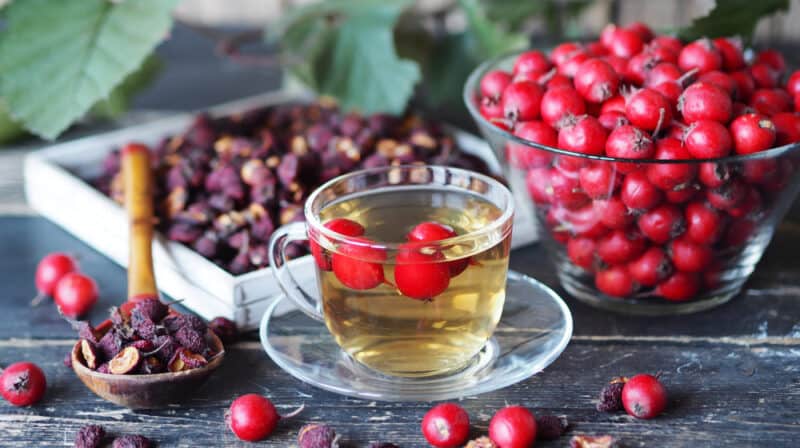
Whether it’s spring, summer, fall, or even winter, your hawthorn tree has something to share. The flowers, leaves, and berries are all considered delicious and medicinal. Some herbalists also use the thorns medicinally.
Their multiple uses is one of the reasons that so many people try growing hawthorns.
Hawthorn is considered especially effective in treating cardiovascular issues. Hawthorn tea and hawthorn berry elixir are common ways to take hawthorn. The leaves and flowers can be harvested when they are young and fresh. The berries should be picked when they’re ripe and red.
Remember that the seeds contain a type of cyanide, as do apples and peaches, which is released when the seeds are cracked open. Don’t eat the seeds.
Processing Leaves and Flowers
Let the leaves and flowers dry in a cool, dry place – out of direct sunlight. After about two weeks, store the dried flowers and leaves in a clean mason jar. You can use them for tea or mix them with other herbs for more flavor.
I think hawthorn flowers mix well with linden leaves and dried catnip.
Processing Hawthorn Berries
You can also dry hawthorn berries, but they dry better in a dehydrator or low oven than in the open air. I prefer to process the fresh berries as soon as possible – turning them into an elixir or jam.
Hawthorn berry elixir involves steeping the fresh berries in neutral alcohol (like vodka or rum) to make a tincture and then straining and mixing the tincture with raw honey. Take a tablespoon or two of elixir daily or mix it with sparkling water to form a delicious herbal cocktail.
Hawthorn jam is another fantastic way to use hawthorn berries. Hawthorn jam is easy to make, and tiny jars of jam make great gifts.
If you’re primarily interested in using your hawthorn tree to make jam, choose a variety famous for its flavorful berries. The western mayhaw (C. opaca) and Copenhagen hawthorn (C. intracata) are renowned for their sweet, jammy fruits.
Using Hawthorn Bark and Thorns
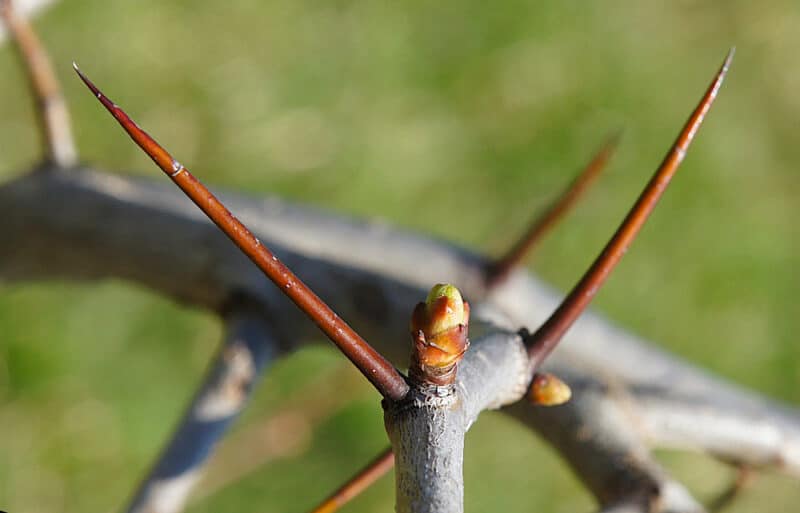
The thorns of the hawthorn don’t need to be processed. If you use them medicinally, wash them well and add them to teas. Thorns are considered more potent, medicinally, than berries and leaves. That means that, unlike the berries, leaves, and flowers, it’s easier to overconsume the thorns.
If you’re interested in working with hawthorn thorns, start slowly and get to know them slowly. If you have a clotting disorder or low blood pressure, talk to your doctor about working with hawthorn before adding it to your daily routine.
